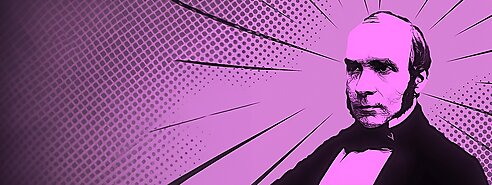This lesson is about John Snow, an English physician and pioneer in anesthesia and epidemiology. Snow’s groundbreaking work led to the widespread adoption of anesthesia as well as a significant improvement in public health around the world. Snow was the first to demonstrate the link between contaminated water and the spread of cholera. As a result, he advocated for clean drinking water and sewers. Eventually, these innovations were adopted around the world, “thus likely saving millions of lives.”


- What is cholera? Fortunately, many of us are not familiar with the disease. Cholera is an extremely dangerous water‐borne disease caused by bacteria. Watch this video about how to prevent cholera. After watching the video, in partners, small groups, or as a whole class, respond to the following questions:
- What causes cholera?
- How can cholera be prevented?
- As shown in the video, how is cholera not just a health problem but also a social and political one
- What is epidemiology? Watch this video from a university epidemiology program, and then answer the following questions:
- What do epidemiologists do?
- Why do you think a student would be interested in becoming an epidemiologist?
- Are you interested in a career in epidemiology or public health?
Questions for Reading, Writing, and Discussion
Read the article, and then answer the following questions:
- In your opinion, what impact did the 1832 cholera epidemic have on Snow’s career and life choices?
- Snow grew up in a poor neighborhood. How do you think his background helped him when he needed epidemiological information from the residents of the London district afflicted with cholera?
- Snow was a meticulous researcher. Describe three instances mentioned in the article that demonstrate how Snow’s dogged experimentation resulted in useful scientific discoveries.
- Contextualize Londoners’ reactions to the cholera outbreaks of the mid‐1800s. Why would 19th century Britons believe that “miasma” was the cause of the outbreak?
- Identify the methods Snow used to collect information on victims of the outbreak.
- Make a connection. Snow abstained from alcohol and was a vegetarian—a rarity during his era. Think of another historical example in which a person’s occupation, religious affiliation, dietary choices, or other marker of identity or habit made them an exception to the predominant habits of the period.
- Authorities at the time of the cholera outbreak removed the handle of the Broad Street pump. This dramatically reduced infections. Compare the methods used to fight the 1854 cholera outbreak with those used against the Black Death of the mid‐1300s. What was different? What was the same?
Extension Activity/Homework
- Make a Presentation about a Global Problem
Does cholera still exist today? Sadly, yes. According to the World Health Organization, 1.3 million to 4.3 million people suffer from cholera and 21,000 to 143,000 people die of the disease each year.
One of the main causes of cholera and other diarrheal diseases is poor sanitation. Over 3 billion people—46% of the world’s population—lack access to safely managed sanitation. This is a massive problem, and something needs to be done to solve it.
UNICEF is one organization that is working to give children clean drinking water and proper sanitation. Go to UNICEF’s Water, Sanitation, and Hygiene (WASH) website and do the following:- Read the introductory paragraphs and key facts.
- Choose one of the eight topics to investigate: Water, Sanitation, Hygiene, WASH and climate change, WASH in emergencies, Strengthening WASH systems, WASH in urban areas, WASH in schools, or WASH in health‐care facilities.
- Make a Google Slides or PowerPoint presentation summarizing the specific problem UNICEF is addressing and describe the organization’s response. Use your own words. Do not copy and paste text without properly citing it. Include images on each slide.
- Create three to five original questions about the information in your presentation. Ask open‐ended questions that will stimulate thought and discussion. Avoid questions that just ask students to regurgitate information.
- Make a screen recording of your presentation or give a mini lecture to your class.